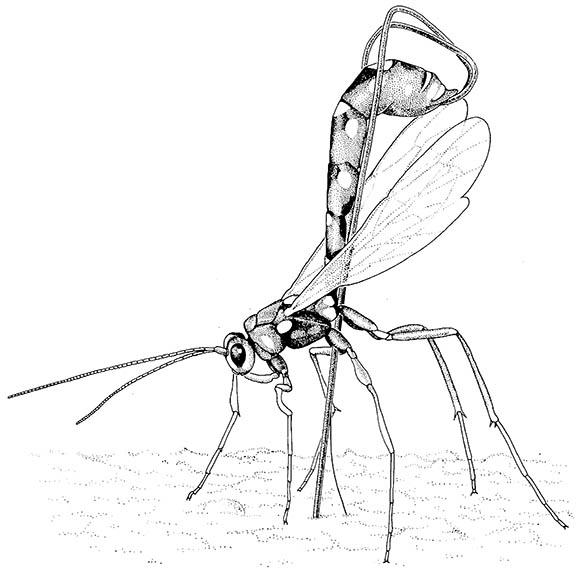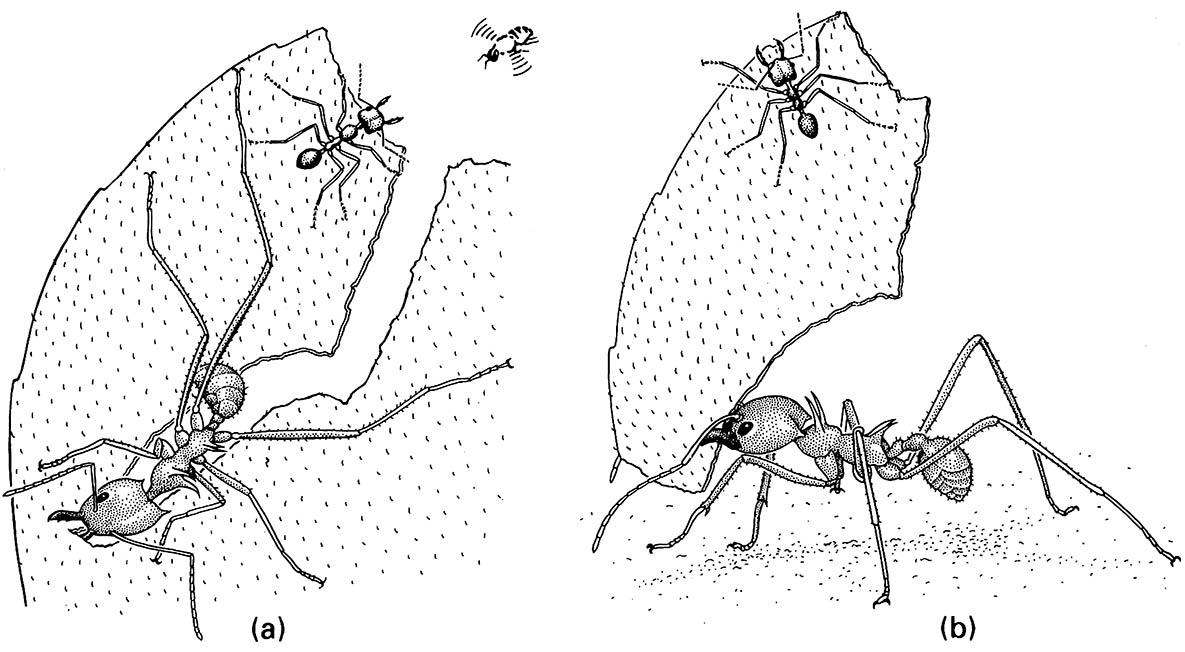13.2.2. Host acceptance and manipulation by parasitoids
The two orders with greatest numbers and diversity of larval parasitoids are the Diptera and Hymenoptera. Two basic approaches are displayed once a potential host is located, though there are exceptions. Firstly, as seen in many hymenopterans, it is the adult that seeks out the actual larval development site. In contrast, in many Diptera it is often the first-instar planidium larva that makes the close-up host contact. Parasitic hymenopterans use sensory information from the elongate and constantly mobile antennae to precisely locate even a hidden host. The antennae and specialized ovipositor (Fig. 5.11) bear sensilla that allow host acceptance and accurate oviposition, respectively. Modification of the ovipositor as a sting in the aculeate Hymenoptera permits behavioral modifications (section 14.6), including provisioning of the immature stages with a food source captured by the adult and maintained alive in a paralyzed state.
Endoparasitoid dipterans, including the Tachinidae, may oviposit (or in larviparous taxa, deposit a larva) onto the cuticle or directly into the host. In several distantly related families, a convergently evolved “substitutional” ovipositor (sections 2.5.1 & 5.8) is used. Frequently, however, the parasitoid’s egg or larva is deposited onto a suitable substrate and the mobile planidium larva is responsible for finding its host. Thus, Euphasiopteryx ochracea, a tachinid that responds phonotactically to the call of a male cricket, actually deposits larvae around the calling site, and these larvae locate and parasitize not only the vocalist, but other crickets attracted by the call. Hypermetamorphosis, in which the first-instar larva is morphologically and behaviorally different from subsequent larval instars (which are sedentary parasitic maggots), is common amongst parasitoids.
Certain parasitic and parasitoid dipterans and some hymenopterans use their aerial flying skills to gain access to a potential host. Some are able to intercept their hosts in flight, others can make rapid lunges at an alert and defended target. Some of the inquilines of social insects (section 12.3) can enter the nest via an egg laid upon a worker whilst it is active outside the nest. For example, certain phorid flies, lured by ant odors, may be seen darting at ants in an attempt to oviposit on them. A West Indian leaf-cutter ant (Atta sp.) cannot defend itself from such attacks whilst bearing leaf fragments in its mandibles. This problem frequently is addressed (but is unlikely to be completely overcome) by stationing a guard on the leaf during transport; the guard is a small (minima) worker (Fig. 9.6) that uses its jaws to threaten any approaching phorid fly.
The success of attacks of such insects against active and well-defended hosts demonstrates great rapidity in host acceptance, probing, and oviposition. This may contrast with the sometimes leisurely manner of many parasitoids of sessile hosts, such as scale insects, pupae, or immature stages that are restrained within confined spaces, such as plant tissue, and unguarded eggs.

If a larva is located, she stings and paralyses it before laying an egg on it.

(a) A medium-sized worker, called a media, cuts a leaf with its serrated mandibles while a minor worker guards the media from a parasitic phorid fly (Apocephalus) that lays its eggs on living ants. (b) A guarding minor hitchhikes on a leaf fragment carried by a media. (After Eibl-Eibesfeldt & Eibl-Eibesfeldt 1967)

